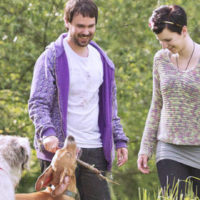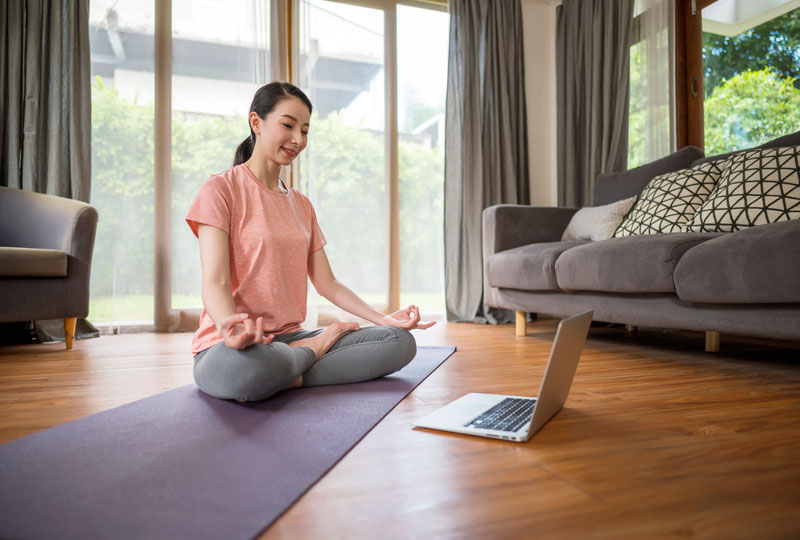Yoga can be slow, fast, hot, soothing — here’s a primer for beginners, to figure out which type might be your best fit.
Results from International Journal of Yoga studies show that the practice of yoga enhances strength and flexibility, improves respiratory and cardiovascular function, reduces stress, anxiety, depression, and chronic pain, improves sleep patterns and enhances overall well-being. However, with so many types of yoga to choose from, finding the one that is right for you can be a challenge. Taking time to identify your goals for a yoga practice can help. Instructors and classes vary, so if you don’t find the right fit the first time, keep an open mind and try again.
There are many yoga videos on YouTube, so feel free to search for some you like among the following sales of yoga. The coronavirus pandemic and the need to keep distance between people creates an opportunity to sample different styles of yoga online at home before committing eventually to an in-person class.
These are just a few of the more popular styles of yoga:
Hatha. A foundational style of yoga that is perfect for beginners or for anyone seeking stress relief. Hatha typically uses a slow, flowing, gentle pace. The focus is on breathwork (pranayama) and holding postures (asanas) for a short time. It typically includes an introduction to meditation.
Iyengar. Developed by yogi B.K.S. Iyengar, this practice uses slow, precise movements, with a focus on balancing strength and range of motion through proper body alignment. The practitioner can expect to use a variety of props such as blankets, bolsters, straps and blocks to aid the practice, making it suitable for all ages, levels of flexibility and abilities.
Vinyasa. If you feel like speeding things up, try taking a Vinyasa flow class. This popular form of yoga moves from one posture to the next in a continuous sequence, with the intention of linking each inhale and exhale to each pose. Classes will vary based on the instructor’s choice of poses to flow through, but expect to get your heart rate elevated. Although Vinyasa is beginner friendly, the flowing movements can be a bit tricky to follow when first starting out. If your class is held in person, be sure the instructor knows you are new. A good instructor can adapt his or her teachings to the ability and skill level of the students present, despite the class description or level.
Yin Yoga. A passive approach to yoga that focuses on stretching, strengthening and lengthening connective tissue. The majority of the poses are done seated or lying down, usually for three to five minutes or longer for each pose. Practitioners report improved joint range of motion and posture and some have found it helpful with the release of traumatic events. Although beginner-friendly physically, it can be a challenge mentally to sit still and hold a pose for an extended period of time when just starting out.
Bikram. For those who are looking to really sweat, this is for you. Bikram yogis practice in a room heated to between 95 and 105 degree Fahrenheit, with a humidity level of 40%. Think hot and sweaty — perfect for increasing flexibility. Each session is a 90-minute class, including 26 poses that are held for several slow and deep breaths. Because the sequence is always the same, it will be easier for beginners to catch on. However, the heat may take some getting used to. Be sure to drink a lot of water, bring a towel and don’t be afraid to take breaks during class, until you build up endurance.
Ashtanga. In Sanskrit, Ashtanga means “eight limbs.” This refers to the physically demanding eight-part practice that students go through, while the teacher moves around the room giving adjustments. Commonly referred to as “power yoga,” this style includes synchronized movement and breathing. It moves at a faster pace than some other types of yoga, and is generally geared to practitioners with more advanced strength and endurance.
Finding the right type of yoga practice and making time to practice regularly can be well worth the effort. Studies confirm that both mental and physical benefits can make noticeable improvements in health. Whether online or in-person classes are your jam, learn a bit more about the different style options and try a few, until you find what’s right for you.
Stacey Kendrick, MS, is a health educator with more than 20 years of experience in wellness and population health. She is the mother of two adult daughters. She teaches healthy cooking classes, runs, gardens and enjoys backyard bonfires.

Vanderbilt Health operates a variety of walk-in clinics in Middle Tennessee, including some with Williamson Medical Center, to take care of everything from sprains and sport injuries to flu shots, fevers, coughs and rashes. Search locations and learn more about the conditions treated there.

